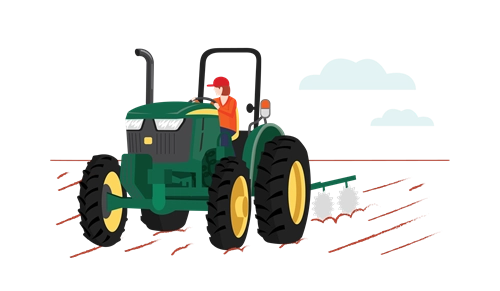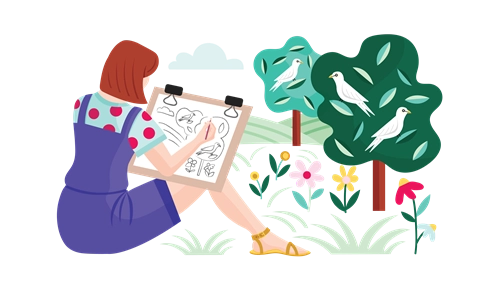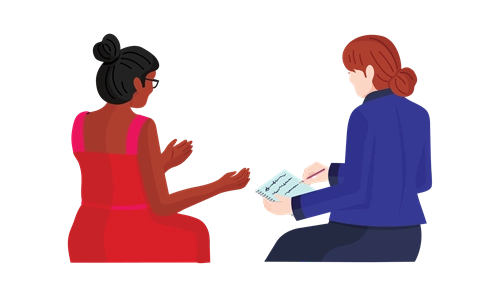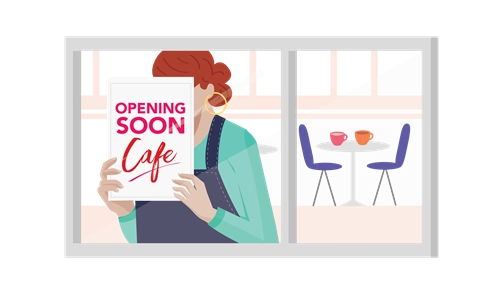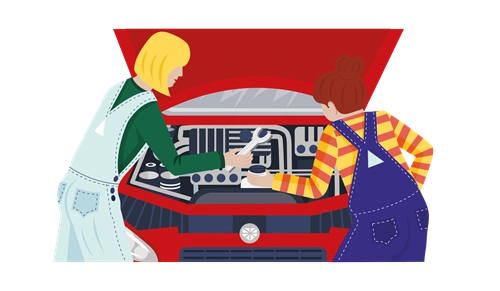-
Curriculum alignment
Mathematics
AC9M5N04 – Recognise that 100% represents the complete whole and use percentages to describe, represent and compare relative size; connect familiar percentages to their decimal and fraction equivalents
AC9M5M01 – Choose appropriate metric units when measuring the length, mass and capacity of objects; use smaller units or a combination of units to obtain a more accurate measure ()
AC9M5M02 – Solve practical problems involving the perimeter and area of regular and irregular shapes using appropriate metric units (
AC9M5M04 – Estimate, construct and measure angles in degrees, using appropriate tools including a protractor, and relate these measures to angle names
AC9M5SP01 – Connect objects to their nets and build objects from their nets using spatial and geometric reasoning
AC9M6M01 – Convert between common metric units of length, mass and capacity; choose and use decimal representations of metric measurements relevant to the context of a problem
AC9M6M02 – Establish the formula for the area of a rectangle and use it to solve practical problems
Design and Technologies
AC9TDE6K01 – Explain how people in design and technologies occupations consider competing factors including sustainability in the design of products, services and environments
AC9TDE6K05 – Explain how characteristics and properties of materials, systems, components, tools and equipment affect their use when producing designed solutions
AC9TDE6P01 – Investigate needs or opportunities for designing, and the materials, components, tools, equipment and processes needed to create designed solutions
AC9TDE6P02 – Generate, iterate and communicate design ideas, decisions and processes using technical terms and graphical representation techniques, including using digital tools
AC9TDE6P03 – Select and use suitable materials, components, tools, equipment and techniques to safely make designed solutions
AC9TDE6P04 – Negotiate design criteria including sustainability to evaluate design ideas, processes and solutions
AC9TDE6P05 – Develop project plans that include consideration of resources to individually and collaboratively make designed solutions
Learning hook
As a class, collect a variety of cardboard packaging from grocery products such as cereal, biscuits, tissues and sultanas.
Look at the collection. What’s the most common shape for cardboard packaging at the supermarket? Chances are it’s a rectangular prism.
Why? Because it’s a strong shape and can be packed into a container easily. In fact, we have been using cardboard boxes for 150 years! Cardboard food packaging is low-cost and light-weight, and the rigidity of cardboard make it a very useful material. Not only that, cardboard can also be a more sustainable solution, especially if recycled cardboard is used.
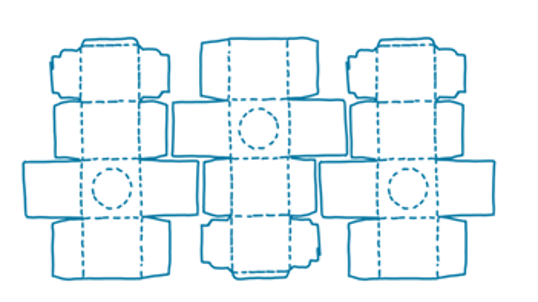
Now have the students select a package, carefully pull apart any glued edges and look at the flat net of the box.
Ask students, ’Is it the same as the net for a rectangular prism?' ‘How is it different?’ To highlight the difference, see if students can trace the simple net for a rectangular prism over the top of the net of the box.
Encourage students to notice any tabs or overlapping pieces. What do they think is the purpose of those?
If students have access to tablets, have them take a photo of the net shape, then trace the edges and folds. Students can duplicate the shape and see the best way to fit multiple shapes together on a single sheet of paper to reduce the amount of cardboard waste.
Learning input
Not all cardboard packaging takes the form of a rectangular prism. Cardboard packaging nets can actually be much more diverse and interesting, particularly as industrial designers seek to find more sustainable solutions to packaging diverse products.
When thinking about cardboard packaging of food, industrial designers need to consider that it should do the following:
- Protect food structure during transit, by:
- being strong and maintaining shape
- reducing food movement within the container, avoiding spoilage.
- Stack/store well.
- Limit environmental impact (for example, cardboard waste when cut from a single sheet).
Girls in focus
There are diverse careers in the packaging industry, including industrial designers, engineers, scientists and technologists. Hear from a diverse range of women in the packaging industry in this set of interviews.
Students can explore a range of nets at this website.
Select some for students to build, focusing on shapes that vary from rectangular prisms, such as polygonal boxes, triangle boxes or even spherical boxes for a challenge.
Draw students’ attention to the conventions for indicating cuts or folds.
Before building, introduce these basic skills for fabricating with card. Have students practise using recycled card.
- Create paper templates of nets and stick them lightly to the cardboard. Trace around the edges of the template, then remove it before cutting out the cardboard nets.
- Students will need to know how to score card so that it folds more easily. To score an edge, use a unfolded paperclip or an empty ballpoint pen, press down heavily and drag along the edge of a ruler. Students can experiment with bending the card into or out of the fold.
- Students should practise cutting cardboard.
- Students can explore different methods of joining the sides of the box:
- Create tabs that can be glued down.
- Create tabs and slots that don’t require glue.
- Create flange tabs (for example, to connect a cardboard tube to a flat piece of cardboard). To make a flange joint, make several small cuts around the base of the tube and then fold the pieces so it creates flange. Glue these down and, to add extra strength, cut out a circle (or appropriate shape) to glue on top of the flange tabs.
- Create slot joints to join two pieces of cardboard, where both pieces are slotted.
Girls in focus
Providing opportunities to focus on and practise fabrication skills can significantly increase girls’ engagement with hands-on tasks. You could even consider getting students who have mastered a skill quickly to create a short video so that other students can refer to the video at any time.
Learning construction
Challenge students to design and innovate a packaging solution for a single decorated donut. You could have students design their own donuts to show off in their innovative packaging! But there’s a catch: they won’t be constructing their final design; they need to create the template and instructions, and hand those over to be constructed by someone else.
To reinforce the engineering design cycle, have students develop their ideas in a design notebook. Explain that the purpose of the notebook is not to demonstrate a perfectly neat record, but to show the messiness of their ideation and design thinking.
Girls in focus
Girls have often been socialised to prioritise neatness and perfection in every task. Consider having students create their own design notebooks using recycled paper to reinforce the idea that this is a space for any and all thinking, rather than a permanent record.
Provide students with some plain donuts in lightweight, flexible sandwich bags so that they can measure the dimensions of the basic donut and anticipate how much additional space they might need for toppings. In their design notebooks, students should sketch the donut and add relevant dimensions.
As a class, explore the criteria for great donut packaging, for example, space to write the ingredients, being able to see the toppings in order to want to buy the donut, ease of construction, visual appeal, low waste, and limited damage to toppings during transit. Students should add the agreed criteria to their design notebook.
Challenge students to work in pairs to come up with three different packaging ideas for their donut. They should sketch and annotate their ideas.
Once they have three different ideas, they can identify the best idea, then construct their first prototype. Make sure they know this is not their final packaging – this is their opportunity to explore different design options.
Students should make notes about what works and what doesn’t, and document their solutions to any problems that arise.
Once students have developed their prototype to a point where they are satisfied, they should construct a final net in their design notebook. To determine environmental impact of their design, students first calculate the area of the piece of card they require, then the area of their net. What percentage of the card was used in their construction?
Students then mark out their package net on two clean pieces of card and document the steps to build the package. Each pair of students will build one package, and another pair (chosen randomly by the teacher) will build the other, following the instructions.
The construction team will complete a review of the build process, which the design team will include in their design notebook.
Students can then showcase the two packages (with donuts perhaps!) as well as information about the key features of the package, such as design advantages, amount of waste and time needed to construct the package.
You could consider hosting a staff or student showing, with opportunities to vote for different packaging awards (most creative, most marketable, most environmentally friendly) or combining with a school event to sell some donuts as well.
-
Rubric
Criteria
Beginning
Achieved
Exceeded
Brainstorming
Identified a single solution to the problem.
Identified several solutions to the problem.
Identified several solutions to the problem that approached the problem in quite different ways.
Prototyping
Built a prototype.
Built a prototype that showed some similarities to the planned solution.
Built a prototype that used the core principles of the planned solution.
Testing
Measured the height of the tower.
Selected units of measurement to obtain an accurate height.
Selected units of measurement to obtain an accurate height and considered fairness and repeatability when measuring.
Iterating
Built another prototype.
Demonstrated reflection and consideration before and between development of further iterations.
Demonstrated careful evaluation of the first prototype and actioned areas for improvement in development of further iterations.
Group work
Participated in the group discussion and activity.
Participated in discussion and was hands-on in each phase of the engineering design cycle.
Participated and supported others’ participation in discussion and hands-on aspects of each phase of the engineering design cycle.


